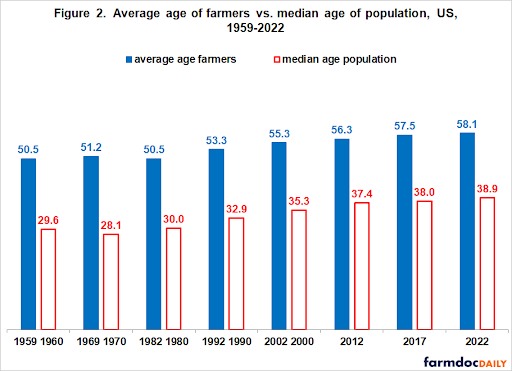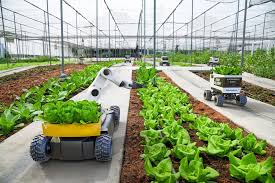The Technology Revolution in Agriculture
Introduction
As the holiday season comes to a close, many New Year’s resolutions center around food—whether it’s eating healthier, supporting local produce, or practicing mindful eating. Yet, while food plays an essential role in our daily lives, many people overlook the journey it takes to reach our plates. Agriculture, the backbone of our food system, is facing immense challenges. The sector contributes 14.5% of global greenhouse gas emissions and accounts for 70% of global freshwater withdrawals. Issues like soil degradation and the need to feed a growing population only add pressure. To address the growing environmental and production challenges, the agricultural industry has recently turned to technology as a solution. Innovations like autonomous tractors and precision drones promise to reduce environmental impacts and transform the future of farming.
Is there a problem with the current agriculture sector?
Many people are unaware of the variety of problems facing the agriculture sector because they do not see an immediate effect in their personal lives. This is the first problem with the current state of agriculture: a disconnected public. This disconnect also results in “a lack of understanding and appreciation for the role farming plays in our society. This problem can result in dangerous misconceptions about food production and sustainability efforts…” (Robinson 2024). This disconnect is widened by the urbanization of rural areas, which is reducing our available agricultural land and removing vital resources such as water. This issue is particularly concerning given that only 12 percent of the land on Earth is suitable for farming, putting additional pressure on the already limited space needed to support global food production.
Another major concern with the current farming sector is deteriorating farmland, soil erosion, and labor costs. At first glance, these three points seem unrelated, but they are the key problems to a cycle that many farmers are currently facing. Farmland is degrading due to a lack of proper management and due to the continuous farming practices that cause soil erosion and degradation. Problems with the soil result in the loss of topsoil, a necessary layer that provides nutrients necessary for plant growth. Without topsoil, crop productivity, soil fertility, and overall agricultural sustainability decrease. Furthermore, an aging workforce in the agriculture sector is causing a labor crisis as the younger generation is moving out of the rural areas. This older workforce now has to compete with soil issues and farmland degradation, pushing any thoughts of sustainability far away, further degrading soil quality.
Figure 1

Average age of farmers compared to the median age of the population
Source: Farmdoc Daily
Current and Future Solutions
While the list of current difficulties in agriculture seems to be unmanageable, the implementation of technology has already made a noticeable impact. The use of technology in the farming sector has led to the development a new field of technology known as agtech, which has already produced innovations such as precision agriculture, smart irrigation, automation, and biotechnology. While some may question the effectiveness of automatic farms, “…farm automation, often associated with “smart farming”, is a technology that makes farms more efficient, as it automates the crop or livestock production cycle. An increasing number of AgTech companies are working on robotics innovation to develop drones, autonomous tractors, robotic harvesters, automatic watering, and seeding robots. For example, a company using big data to monitor over 370,000 acres throughout Latin America were able to save over 72 billion liters of water since its installation date in late 2023 (“How technology can help farmers”, 2023). Although these technologies are fairly new, the industry has seen an increasing number of traditional agriculture companies adopt farm automation into their processes, as its primary goal is to cover monotonous tasks and increase efficiency (“New Agriculture Technology”, 2024).
One major advancement in AgTech has been the implementation of artificial intelligence. While farmers used to have issues with soil erosion and the quality of the ground, AI-powered tools have the capability to analyze data on plant health, soil, and weather conditions, enabling informed decisions and boosting productivity. Drought-resistant biotechnologies leverage big data and machine learning to optimize water usage, contributing to water-neutral goals. These innovations are not limited to plant agriculture; they also transform animal farming. For example, precision fermentation offers sustainable and practical alternatives to traditional animal-based products, which could significantly reduce the 65% of emissions currently attributed to the beef and dairy cattle industry.
Figure 2

Image of robots autonomously farming
Source: AZO Robotics
Conclusion
In conclusion, the agricultural sector is at a critical juncture, grappling with environmental challenges, resource depletion, and an aging workforce. While many are unaware of the full scope of these issues, the reality is that agriculture plays a fundamental role in both our food systems and our environment. However, there is hope on the horizon. Technological innovations, including AI-powered tools, precision farming, and automation, offer solutions to mitigate many of the problems faced by farmers. From optimizing resource usage to improving crop productivity and reducing emissions, these advancements hold the potential to transform the way we produce food. Embracing these technologies, along with sustainable farming practices, can pave the way for a more resilient and sustainable agricultural system. As we enter a new year, it’s important that we recognize the challenges ahead, support the integration of new technologies, and foster a deeper understanding of agriculture’s critical role in shaping a sustainable future for both the planet and the people who depend on it.
References and Sources:
Robinson, L. (2024, September 24). Top 7 AG issues 2024: Challenges in modern agriculture: Verdesian. Top challenges for modern agriculture in 2024. https://vlsci.com/blog/top-issues-in-agriculture-2024/
Plug and play. (2024, April 24). New agriculture technology in modern farming. https://www.plugandplaytechcenter.com/insights/new-agriculture-technology-modern-farming
World Economic Forum. (2023, November 9). How technology can help farmers improve food security. Here’s how technology is helping solve agriculture’s biggest issues. https://www.weforum.org/stories/2023/11/heres-how-innovation-is-helping-agricultures-longest-standing-issues/
Yamat, R. (2025a, January 9). Farming tech is on display at CES as companies showcase their green innovations and initiatives. AP News. https://apnews.com/article/ces-agriculture-climate-tech-las-vegas-e1d7bc812bb20951dac7976f6b3527ad